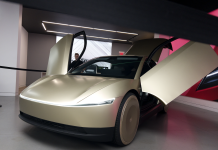Madison Donahue-Wolfe
Staff Writer
A solution to the energy crisis we now face may involve driving on roads made of glass. Scott and Julie Brusaw, the husband and wife team behind the start-up Solar Roadways, are in the process of developing solar panels that would replace the pavement on roads.
The 18,000 square miles of highway and nearly two billion parking spots in the United States would provide an ample field for the absorption of solar energy. According to FastCompany, if every paved surface in the country was covered, the panels would produce more energy than the country uses, which World Bank estimated at 6,793 kg of oil equivalent per capita in 2012.
Cars driving on glass sounds impossible, except for the fact that the glass Solar Roadways plans to use can support 250,000 pounds of weight, according to Engadget. Scott Brusaw, one of the co-founders of Solar Roadways, explains how the glass used in the solar panels is so durable.
“Think of bulletproof glass or bomb resistant glass,” Brusaw says. “You can make it any way you want. Basically bulletproof glass is several sheets of tempered glass laminated together. That’s what we have, only our glass is a half inch thick, and tempered, and laminated.”
The textured surface of the glass also makes the roads less slippery, especially in wet conditions. In addition, the glass is equipped with other key functions, including LED lights which can serve as traffic signals, a heating component which can keep the road surface free of ice or snow in frigid conditions, and motion sensors that can warn drivers of animals crossing, according to Sourceable.
The thick glass serves not only to support the weight of vehicles, but also to protect the underlying circuitry. The solar roadways are more than just giant solar panels; they also serve as a complex data network that connects the roadways to a nationwide grid. According to Sourceable, hundreds of interlocking hexagonal segments connect to a high-speed data network that reports any malfunctions to engineers responsible for their maintenance. The instantaneous reporting of any faults in the solar roadways would prove much more effective than the current and slow tradition of waiting for road maintenance to fill in potholes or other pavement malfunctions.
A project this massive requires massive funding. Solar Roadways received a grant for $100,000 from the U.S. Department of Transportation to build a crude prototype of the glass back in 2009, according to Auto123. However, this sum is not nearly enough to carry out the Brusaws’ dream of transforming the entirety of U.S. highways into functioning solar panels. The couple currently has a Kickstarter up and running on Indiegogo with a goal of $1 million. Since announcing the campaign three weeks ago, they’ve received $112,000, according to BusinessInsider.
Scott and Julie Brusaw plan to use the money they raise as capital to hire more researchers and civil and structural engineers to help transform their infant project into a viable reality. Still, the actual cost of converting every roadway and parking lot in the United States into one vast functioning solar panel will require much more than a single Kickstarter. Hopefully, this first step will allow the Brusaws to prove their concept and further the global goal of generating sufficient renewable energy.









